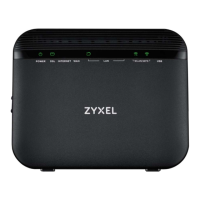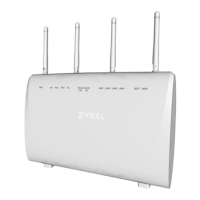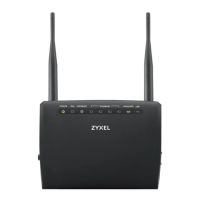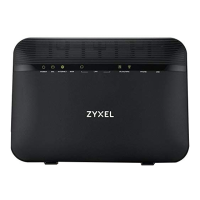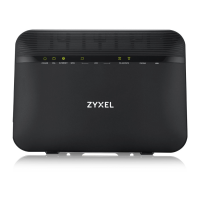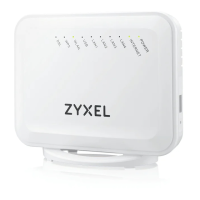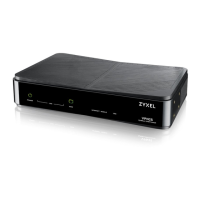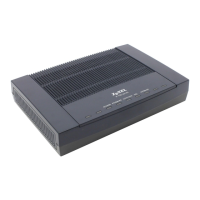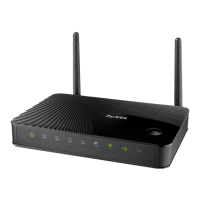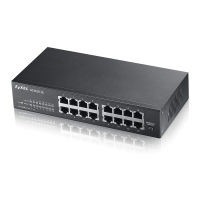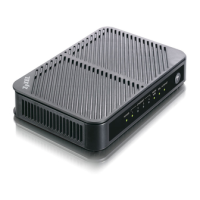Chapter 23 Voice
VMG/XMG Series User’s Guide
307
Use DHCP
Option 120 First
Select this to enable the SIP server via DHCP option 120.
RTP Port Range
Start Port
End Port
Enter the listening port number(s) for RTP traffic, if your VoIP service provider gave you this
information. Otherwise, keep the default values.
To enter one port number, enter the port number in the Start Port and End Port fields.
To enter a range of ports,
• enter the port number at the beginning of the range in the Start Port field.
• enter the port number at the end of the range in the End Port field.
SRTP Support
SRTP Support
When you make a VoIP call using SIP, the Real-time Transport Protocol (RTP) is used to handle
voice data transfer. The Secure Real-time Transport Protocol (SRTP) is a security profile of RTP. It is
designed to provide encryption and authentication for the RTP data in both unicast and
multicast applications.
The Zyxel Device supports encryption using AES with a 128-bit key. To protect data integrity, SRTP
uses a Hash-based Message Authentication Code (HMAC) calculation with Secure Hash
Algorithm (SHA)-1 to authenticate data. HMAC SHA-1 produces a 80 or 32-bit authentication tag
that is appended to the packet.
Both the caller and callee should use the same algorithms to establish an SRTP session.
Crypto Suite
Select the encryption and authentication algorithm set used by the Zyxel Device to set up an
SRTP media session with the peer device.
Select AES_CM_128_HMAC_SHA1_80 or AES_CM_128_HMAC_SHA1_32 to enable both data
encryption and authentication for voice data.
Select AES_CM_128_NULL to use 128-bit data encryption but disable data authentication.
Select NULL_CIPHER_HMAC_SHA1_80 to disable encryption but require authentication using the
default 80-bit tag.
DTMF Mode
DTMF Mode
Control how the Zyxel Device handles the tones that your telephone makes when you push its
buttons. You should use the same mode your VoIP service provider uses.
RFC2833 - send the DTMF tones in RTP packets.
PCM - send the DTMF tones in the voice data stream. This method works best when you are using
a codec that does not use compression (like G.711). Codecs that use compression (like G.729
and G.726) can distort the tones.
SIP INFO - send the DTMF tones in SIP messages.
Transport Type
Transport Type
Select the transport layer protocol UDP or TCP (usually UDP) used for SIP.
Ignore Direct IP Select Enable to have the connected CPE devices accept SIP requests only from the SIP proxy/
register server specified above. SIP requests sent from other IP addresses will be ignored.
FAX Option This field controls how the Zyxel Device handles fax messages.
G711 Fax
Passthrough
Select this if the Zyxel Device should use G.711 to send fax messages. You have to also select
which operating codec (G.711Mulaw or G.711Alaw) to use for encoding/decoding FAX data.
The peer devices must use the same settings.
T38 Fax Relay Select this if the Zyxel Device should send fax messages as UDP or TCP/IP packets through IP
networks. This provides better quality, but it may have inter-operability problems. The peer
devices must also use T.38.
QoS Tag
Table 123 VoIP > SIP > SIP Service Provider > Add new provider/Edit (continued)
LABEL DESCRIPTION

